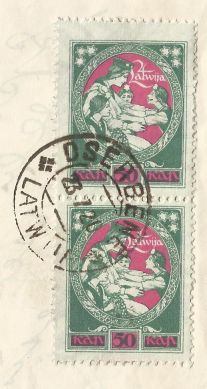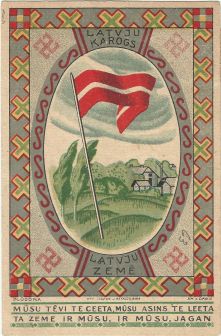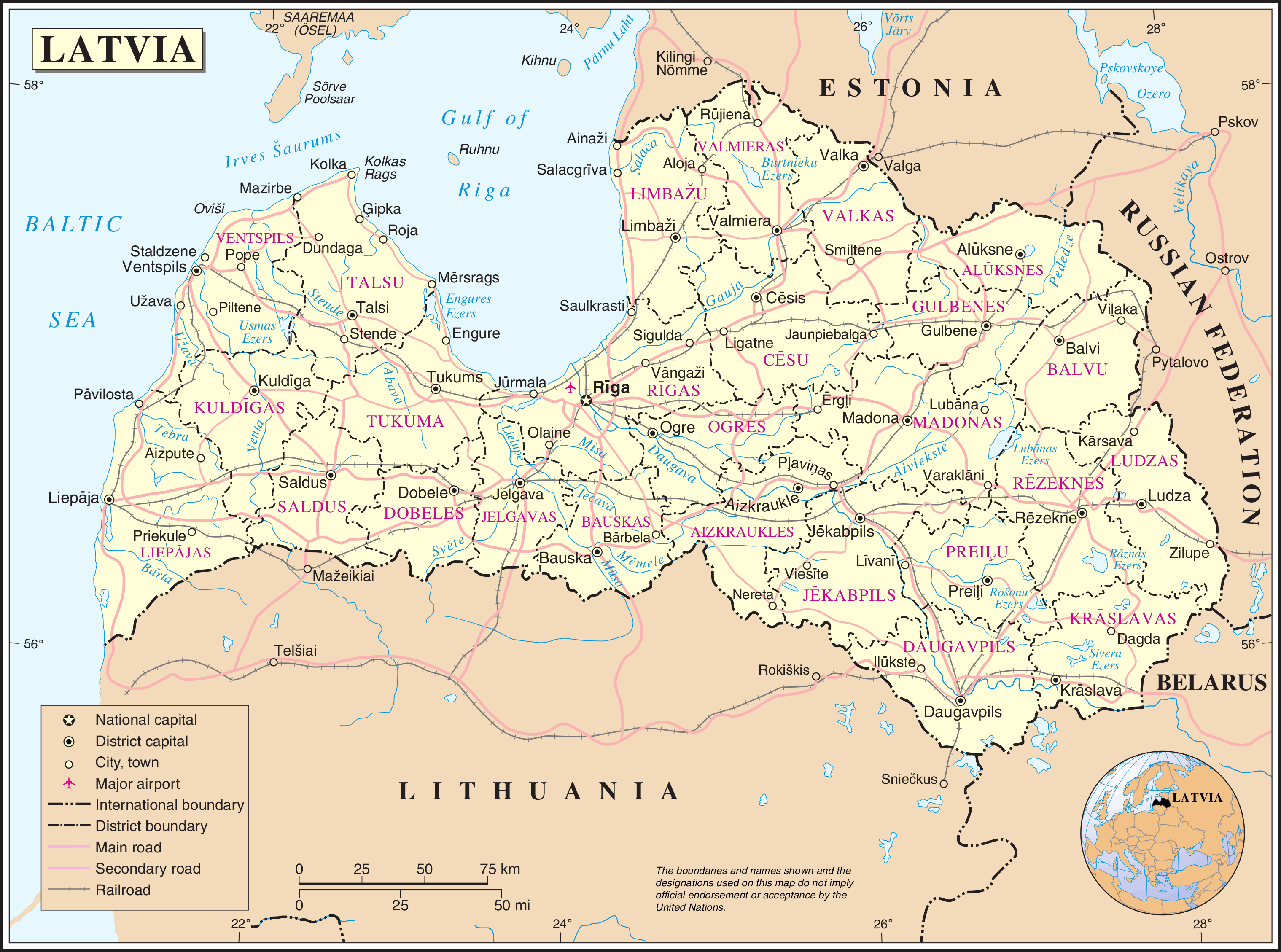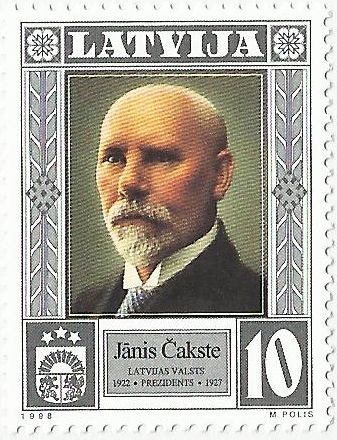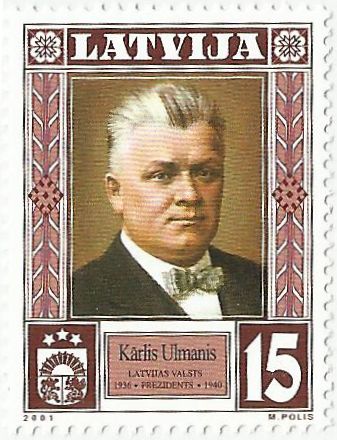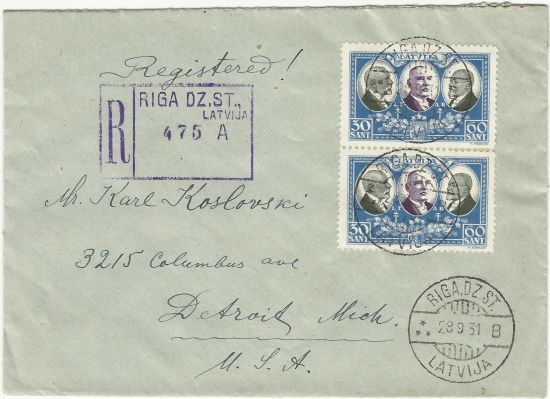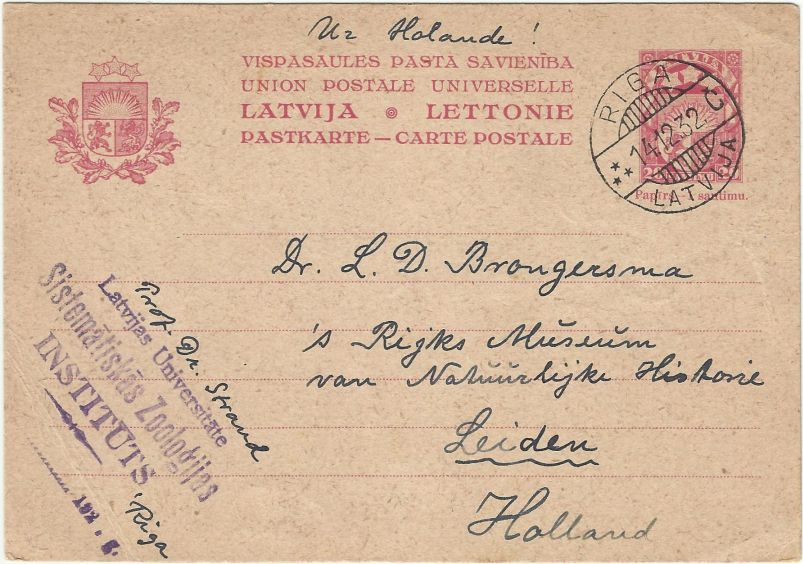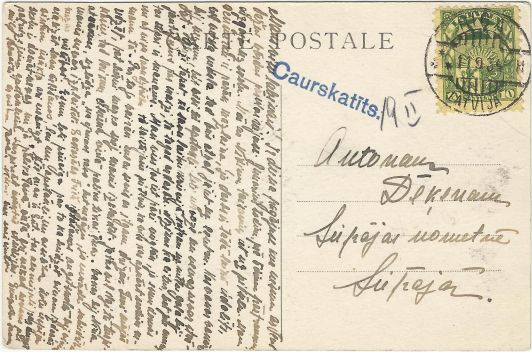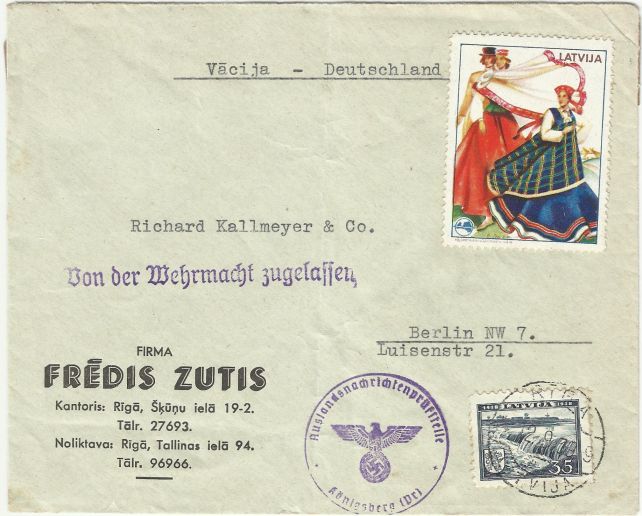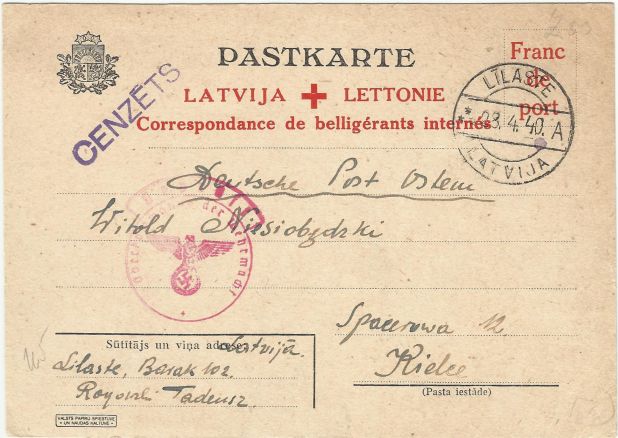Latvia
-
Courland, Semigallia, Latgale
-
Royal Swedish Post
-
Imperial Russian Post
-
German Occupation / Ob. Ost
-
Independent Republic of Latvia
Exactly one week after the Compiègne Armistice, which ended the First World War, the bourgeois Republic of Latvia was proclaimed in Riga on November 18, 1918. But there was still no peace.
While the German troops withdrew from the Baltic from north to south, Soviet Russian and Soviet Latvian units followed on foot from north and east. Riga was occupied by them on January 3, 1919. Only the port city of Liepāja (Libau) with its surroundings remained in the hands of the bourgeois Latvian government.
The Latvian War of Independence (1918–1920) involved not only bourgeois and Bolshevik, so-called "white" and "red" Latvians, but also German Free Corps, the white Russian Bermondt Army, and Estonian and Polish troops.
With the Peace of Riga on August 11, 1920, the Russian Soviet Federative Socialist Republic (RSFSR) accepted Latvia's independence, and so the building of the new state could begin.
Four provinces – One country
Latvia's state borders with Estonia in the north and with Lithuania in the south followed the language borders. The border with the Soviet Union in the east was drawn through the former Russian-speaking governorate of Vitebsk.
In 1920, Latvia covered 65,791 square kilometres and had a population of about 1.6 million (in 1914 over 2.5 million, in 1935 over 1.9 million). Of these, 73% were Latvians, 12% Russians, 5% Jews, just under 4% Germans, as well as Poles, Estonians and Lithuanians. The country was divided into four provinces: Vidzeme (Central Livonia), Kurzeme (Courland), Zemgale (Semgall) and Latgale (Latgalia).
Who owns the land?
For Latvia's agricultural development, the agrarian reform of 1920 was of utmost importance. Not only did agricultural workers and the landless receive land as their own property. Large-scale land ownership was eliminated and the German ruling class in particular was deprived of its economic basis and political influence. Around 1,300 estates with 3.7 million ha of agricultural land were subject to expropriation.
Set-up with difficulties
Latvia was initially – like most of the post-war states – constituted as a democratic-parliamentary republic. However, the Constituent Assembly could not convene until May 1, 1920, and the Constitution came into force on November 7, 1922. The parliament (Saeima) had the right to elect the president of the state and to confirm the judges. Jānis Čakste was elected as the first president.
Of the 18 prime ministers until 1934, 12 came from the ranks of the Peasants' League. Its most important representative was Kārlis Ulmanis. He was prime minister three times and also headed the Ministries of War, Agriculture and Supply for some time. On May 15, 1934, he dissolved the Saeima after a coup d'état and established an authoritarian regime.
Postal history
The effects of the wars between 1914 and 1920 also remained visible in the production of stamps and in postal traffic: there were paper shortages, provisional postmarks, field post and censorship postmarks. In the Soviet-controlled areas, postcards and simple letters up to 15 g remained postage-free.
How do we write? What do we pay with?
In contrast to the land reform, two other reforms can be documented philatelically: The spelling reform of 1920 and the introduction of the Lats as a gold currency in 1922 (1 Lats à) 100 Santīmu.
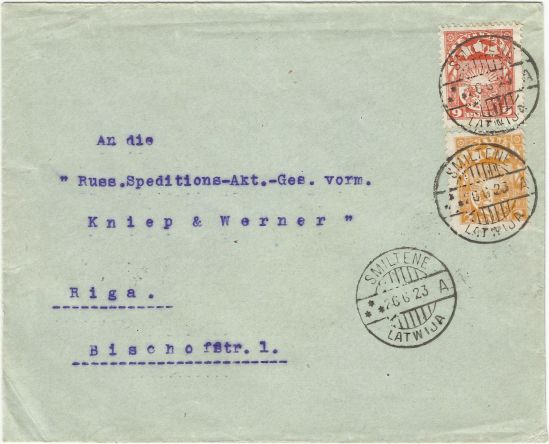
Letter from Smiltene to Riga, 1922. Mixed franking of ruble and Lat currency. Postage: 9 rubles (= 18 Santīmu) + 2 Santīmi = 20 S. for a domestic letter in the 2nd weight category.
Post and railway
According to the "Latvijas statistikas atlass, XX" published by the Statistical Office in 1938, the number of post offices grew from 298 to 1,428 between 1919/1920 and 1936/1937. Thus, while there was initially one post office per 220 square kilometres, there was eventually one post office per 46 square kilometres. Meanwhile, the number of postal items rose from a good 16 million annually to almost 76 million.
In 1920, the length of the passable railway network was 1,737 km, in 1937 it was 3,271 km. Railwaymail played an important role in the transport of mail within Latvia. Between 1920 and 1940, it operated on 58 diff
Selected stamps and complete pieces
Special postmarks
During the 22 years of independence from 1918-1940, 21 special postmarks were used for mostly short periods.

Special stamp of 6 Santīmi from a set of 5 values for the 300th anniversary of the seaport Liepāja (Libau), cancelled with the special cancel 300 LIEPAJA 300, used on June 8, 1925.
Airmail
The surcharge for carriage by airmail within Europe was paid by means of the triangular airmail stamp of 25 Santīmu. The stamps were cancelled with the postmark of the airmail counter at the Riga Main Post Office, RIGA-LIDPASTS.
Charity editions
Between 1929 and 1933, a series of charity editions was issued with surcharges of up to five times the franking value.
Postal stationery
The first Latvian postal stationery was issued in December 1922, the last in 1939. In total, there were eleven different postal stationery–postcards. Under the denomination mark it was always noted that the buyer had to pay not only the nominal value, but also 1 santīms for the paper.
Crisis years
The weakness of the parliamentary system with a large number of parties and the small size of the parliamentary groups in the Saeima coincided with the world economic crisis in 1929. This led to growing sales difficulties for agricultural products and thus mainly affected the agrarian majority of the population. The result was the growth of anti-parliamentary movements.
In a coup d'état, Prime Minister Kārlis Ulmanis, supported by General and War Minister Jānis Balodis, dissolved the Parliament on May 15, 1934 and established an authoritarian regime. From 1936, Ulmanis, contrary to the constitution, combined the offices of president and prime minister.
In the grip of the great powers
While the Baltic countries were in a calm bay of European politics between 1920 and 1936, they were then more and more caught up in the tensions between the great powers. Completely unexpectedly, the German Reich and the Soviet Union signed a non-aggression pact in Moscow on August 23, 1939. In a secret additional protocol, the two ideological opponents demarcated their spheres of interest against each other. Latvia was left to the Soviet Union: on June 17, 1940, troops of the Red Army occupied the country and ended its independence for 51 years.
With the beginning of the German attack on Poland on September 1, 1939, mail between Germany and Latvia was censored in Königsberg.
-
Soviet Occupation
-
German Occupation / Ostland / Courland
-
Camp Mail / Latvians in Exile
-
Independent Republic of Latvia (restored)
-
Private Mail in Latvia



